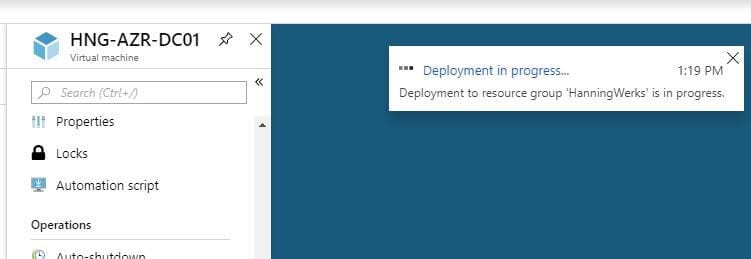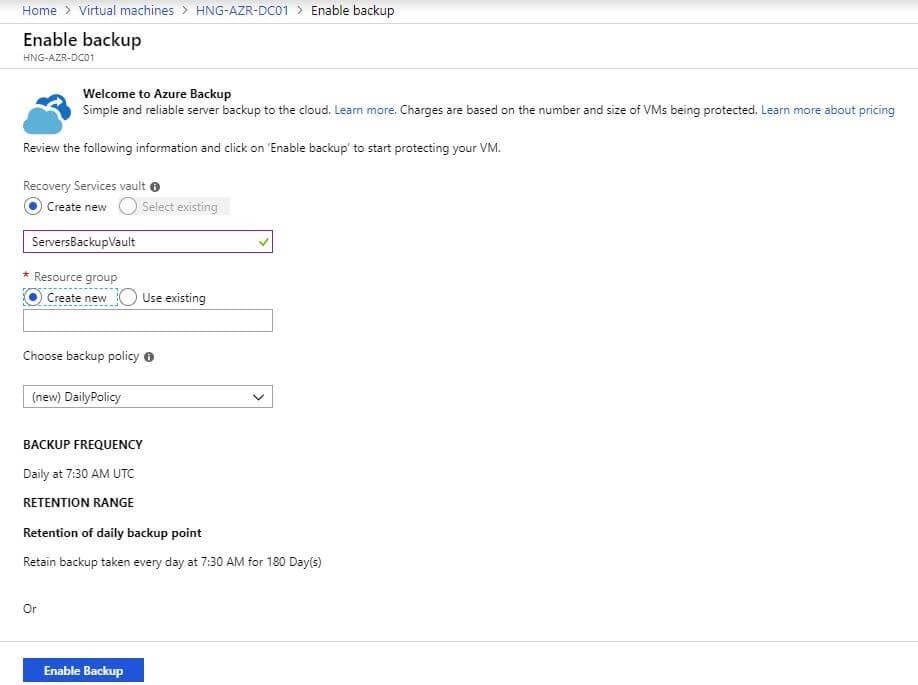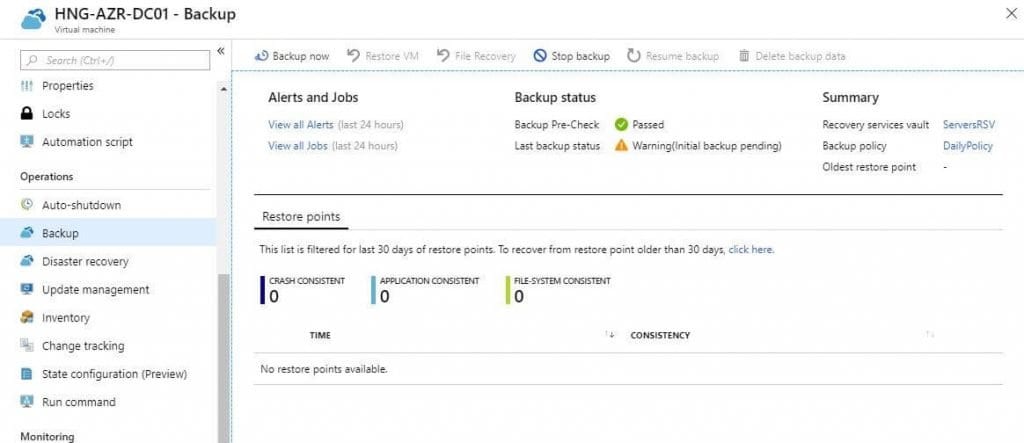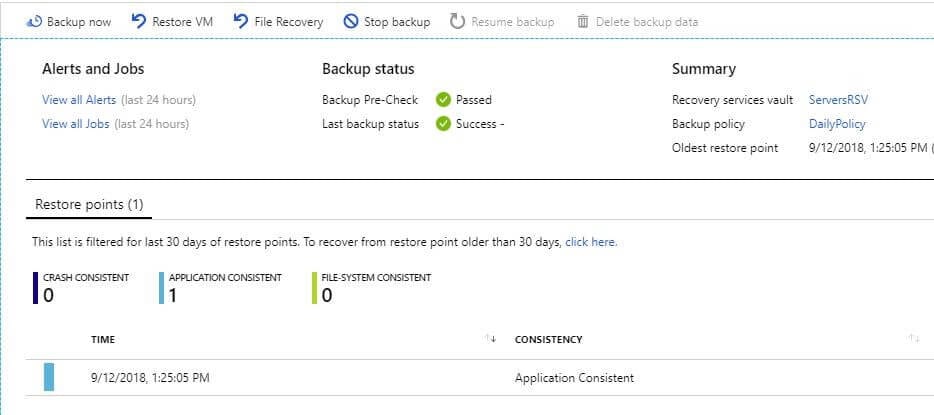
Azure is a powerful cloud infrastructure that many of our customers have started using to host Virtual machines—and sometimes entire Active Directory infrastructure—and has many built-in features to save administrators time and effort in deploying maintenance procedures. One of these is the Azure Recovery Services Vault. In this article we’ll go over setting up protection for VMs using the Azure Recovery Services Vault as well as restoring virtual machines either from a complete restore, or down to a single file.
This article does not cover Microsoft Azure Backup Server, which is a different technology and usually installed on an on-premises server.
Deploying Azure Backup
The first step in deploying Azure backup is creating your first Recovery Services Vault. You can achieve this one of two ways, either when setting up backup for your first Virtual Machine, or using the portal to create a new Recovery Services Vault. For this article, we will create the vault with the new backup setup.
Start by navigating to your Virtual Machine, then clicking Backup from the left-hand blade. The Enable Backup blade will then appear.
 By default, Azure will automatically generate a name for a new vault if you do not already have one. I have changed mine to ServersBackupVault. For future VMs, you will simply be able to select existing, then use the drop down to select your Recovery Services Vault.
By default, Azure will automatically generate a name for a new vault if you do not already have one. I have changed mine to ServersBackupVault. For future VMs, you will simply be able to select existing, then use the drop down to select your Recovery Services Vault.
Select the resource group you want this vault to reside in, then click Enable Backup. You’ll get a notification pop-up detailing the deployment status

Once the Deployment is complete, you can go to your virtual machine and click the Backup tab under Operations and see the following information.

Once the first backup has been completed, you can then look at the backup blade and see the list of stored jobs

You now have a default backup setup for your VM. You can always setup different backup policies for different frequencies if once a day is not sufficient. In the second part of this article, we will look at performing a VM restore, and a file restore from a point in time backup from the Recovery Services Vault.
Joe Hanning, PEI




